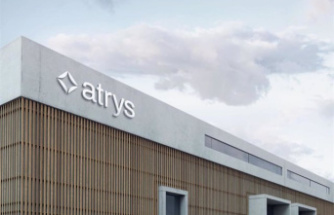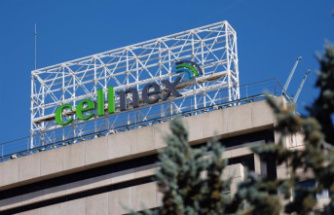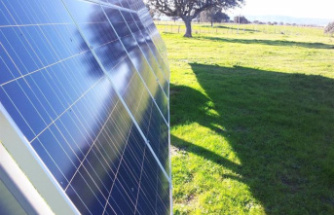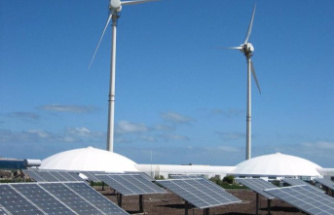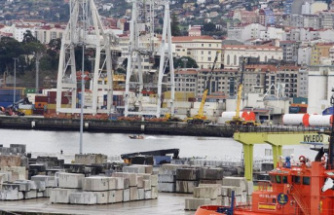Upstairs at the Aga Khan Museum, Syria and Iran share a border, which isn’t geographically accurate, but in the mind of a certain U.S. president it’s probably close enough.
When Donald Trump signed an executive order two weeks ago to bar entry to all citizens of seven largely Muslim countries (Iraq, also on the list, sits between the two), it was with only one border in mind: his own.
Surgical precision has hardly been a hallmark of the new administration’s policy-making in its early days as it lurches from one calamitous executive order to the next. Its blundering, broad brush-stroke divisiveness was exactly what the Aga Khan Museum intended to counter when it opened here in 2014, with its unmatched collection of Islamic antiquities and an invitation to all. This was a museum meant to erode barriers between people: a tall enough order in the pre-Trump era and now one of Everestian proportions.
Still, the museum continues to fight the good fight. In the fall, it opened Syria: A Living HistorySyria: A Living History, a rich exploration of that country’s millennia of diversity and cross-cultural co-operation, and a reminder that today’s disasters there belong less to the whole of a culture than to the opportunism of a moment.
Across the hall, you’ll find Rebel Jester Mystic Poet, the museum’s newly opened exhibition of contemporary Iranian art, all of it borrowed from the Dubai-based Mohammed Afkhami Foundation. In its opening moments, it offers an immediate rebuke of President Trump’s ham-fisted blanket statement.
Present-day Iran is vibrant and contemporary, alive with dissent, humour and a sense of its contemporary self (it’s worth noting, in the context of things, that more than half of the artists here are women). Some of the artists here are global celebrities, jet-setting cultural icons for whom crossing borders is a fact of near-daily life: Monir Farmanfarmaian, based in Tehran, had a retrospective at the Guggenheim in 2015; Shirin Neshat, based in New York, a darling of the international biennale circuit, had her own survey show that same year at the Hirschorn Museum in Washington, D.C.
The exhibition never quite coheres — the only unifying notion here is a shared nationality and even that is as much difference as similarity, given the show’s mixed bag of Iran-based artists and those who willingly joined the international diaspora when Iran’s transition to an Islamic republic became a reality in 1979 — but a binding theme was never really the point.
“It’s very easy to forget about the art and make it about the politics,” Afkhami, well-groomed and impeccably dressed, said on a recent tour of the exhibition’s 30-some pieces. “The mission for me is to set a softer tone, generally, to what is becoming an increasingly vitriolic and ugly chasm between our part of the world and here.”
Whatever the intention, it’s hard to see the show through anything but the refracted lens of the current moment — a view that sharpened just last week when the Museum of Modern Art in New York, arguably the global vanguard for contemporary art, and surely the one with the most reach, hastily installed an unplanned exhibition of artists from the seven banned countries from its permanent collection. It made its intentions clear, saying it acted “to affirm the ideals of welcome and freedom as vital to this museum, as they are to the United States.”
Trump notwithstanding, there will no doubt be those who object to any kind of softening to the current Iranian regime. Human Rights Watch said that, despite the election of an apparently progressive president, Hassan Rouhani, in 2013, its record on human rights violations including political imprisonment, suppression of freedom of speech and execution, actually worsened.
To be clear, Afkhami and the show intend no propaganda campaign for a kinder, gentler Iran (he doesn’t live there himself, splitting time between Dubai, Geneva and London). Instead, Rebel Jester Mystic Poet tucks neatly into the core mission of the museum itself, extracting from the oppression of a monolithic regime a thriving humanity of individual expression.
It can surprise, or even startle, in frank moments: Parastou Forouhar’s big photograph of the folds of black fabric — burka material — suddenly interrupted with the fleshy curl of a thumb looking quite like something the burka very explicitly was meant to suppress; Khosrow Hassanzadeh’s towering hot-pink silkscreen photo collage of himself holding flowers amid a romantic glade, with a tag reading “TERRORIST” attached (the piece was made shortly after former president George W. Bush, who seems measured and reasonable these days, named Iran among an anti-American “axis of evil”).
It also situates contemporary Iran as self-conscious and in tune with how outdated the prescripts of its theological rulers actually are. The money shot, so to speak, is the overstated work of Shirin Aliabadi, whose self portrait in blond wig, blue contact lenses, bandaged nose (a sign of a nose job, reducing her typically grand Persian version to a more TV-ready proportion) and pink bubble gum is an obvious statement about obsession with western junk culture cliché esthetics in Iran’s “closed” society. It’s hyperbole but makes its point.
Meanwhile, Shadi Ghadirian’s photographs — set pieces, equal parts history painting, social critique and cross-era mash-up — achieve similar ends by more complex and subtle means. In them, she puts Iranian women on stage sets with neoclassical backdrops, armed with signifiers of the encroaching west.
Like Aliabadi, but with far more nuance, they poke at the regime’s efforts to contain such seepage, revealing them to be as futile as they surely are. In one, a pair of burka-clad women, faces obscured, pose next to a rough, gestural abstract painting; a symbol if ever there was one, at least in art, of big-footed American cultural dominance. In another, two young women appear wry and cheeky, wearing hijabs as they grin knowingly at the camera (one, wearing a motorcycle helmet and astride a mountain bike, is absurdly serious-seeming, a counterpoint to be savoured).
The pictures were shot using the sets and sound stages of Iranian state TV, which imbues them with inadvertent subversion. The painted backdrops, of Roman columns and lush gardens, are as western-ideal as they come and make the subtle point Afkhami seems to intend.
“My only hope, really, is a simple one,” he says. “It’s to get people familiar with Iranian art, and to look into it and find an object or two that helps them relate to Iranians in general as not so different.”
A modest goal? Perhaps. But in these trying times, where compassion and understanding are increasingly radical notions, no goals are modest and everything is political.
Rebel Jester Mystic Poet: Works from the Mohammed Afkhami Collection continues at the Aga Khan Museum to June 4, 2017.
Rebel Jester Mystic Poet: Works from the Mohammed Afkhami Collection continues at the Aga Khan Museum to June 4, 2017.
The Toronto Star and thestar.com, each property of Toronto Star Newspapers Limited, One Yonge Street, 4th Floor, Toronto, ON, M5E 1E6. You can unsubscribe at any time. Please contact us or see our privacy policy for more information.
Our editors found this article on this site using Google and regenerated it for our readers.


